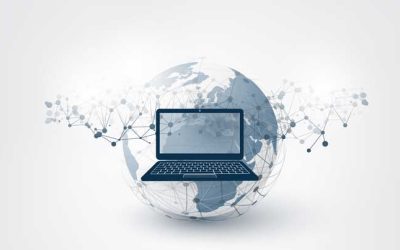Last month, Salesforce launched Revenue Lifecycle Management (RLM), a full overhaul of features and tighter integration of its various current products serving their customers’ Revenue Operations and Management needs (including CPQ, CLM, Revenue Cloud, and Subscription Management).
RLM has been built on and benefits from Salesforce’s native platform capabilities (such as Genie AI, enhanced workflow automations, intuitive code-free configuration, cross-cloud data sharing, etc.) and the use of the standard Object model. Intending to be an extensible enterprise-grade platform, Salesforce RLM also leans heavily into the use of APIs (business, metadata, tooling, etc.) and composable architecture, and positions itself as an exciting approach and solution for current and potential Salesforce RevOps customers.
There are a lot of questions, however, within the existing (and future) Salesforce partner and customer ecosystem about how this new product fits in or makes sense with their broader RevOps landscape, current or proposed investments into processes, people and technology, and overall business strategic objectives and challenges.
Through this FAQ series, we’ll offer an unbiased explanation for these questions and provide background knowledge and expertise to inform your considerations of RLM.
FAQ #4: What’s in it for me?
What realistic benefits and value can I expect from a successful RLM implementation?
This depends on your current situation regarding revenue lifecycle management and insight needs. What type of revenue model and GTM do you utilize? How stable is your product catalog and pricing logic? How mature are your current RevOps stack and processes, and how capable are the people that provide critical inputs and work with its outputs? How large is your company, and what organizational structure does it leverage? What are your unique definitions of “success” and “value”? As you can imagine, one would receive vastly different answers if asking an established leading semiconductor manufacturer, a scrappy new telecommunications reseller, or the owner of a self-service car wash facility.
Another way to answer the “WIIFM” question is to unpack some of the benefits that Salesforce themselves state as value drivers for RLM, and you can determine how important these are for you. Weigh up the following feature/benefit statements below and decide which of these, if any or maybe all, are most desirable or offer a potential solution to a critical revenue management shortcoming.
Configure, price, and quote straight from CRM (Salesforce CPQ)
- Structure and Guardrails for Reps: Help sellers quote quickly and correctly with guided selling and configuration process flows. Accelerate user adoption and reduce system costs with a quoting solution built on CRM.
- Product Catalog and Pricing Management: Simplify go-to-market operations with a unified product catalog accessible by all sellers and partners. Stop revenue leakage with embedded maximum and minimum pricing thresholds.
- Contract Renewals and Amendments: Provide customers the flexibility to amend their contract and terms anytime. Accelerate upsells and cross-sells with quoting for amendments like add-ons, swaps, and upgrades.
Manage the entire contract lifecycle on CRM (Salesforce Contracts)
- Contract Creation: Go from opportunity to quote to contract more efficiently than ever. Speed up new sales and renewals by allowing reps to create and update contracts at any stage of the customer lifecycle. Improve customer experience by unifying sales, finance, and legal teams with Contract Lifecycle Management on CRM.
- Contract Changes and Contract Redlining: Simplify contract negotiations with automated processes across all business units. Ensure compliance by embedding approvals and contract change actions into sellers’ workflow straight from CRM.
- Obligation, Approval, and Change Management: Manage every contracting touchpoint—from initial sale to ongoing changes straight from CRM. Reduce system cost and improve data accuracy by unifying contract data. Empower reps to kick off review and approval workflows for renewals or contract changes straight from their opportunity.
Bill and collect for any revenue model (Salesforce Billing)
- Automated Recurring Billing: Eliminate point solutions and scale business operations by unifying billing for all sales channels on CRM. Increase revenue by offering customers the option to buy and pay for one-time, subscription, usage, or milestone-based products. Ensure charges are captured across every sales channel with consolidated invoicing.
- Payments and Collections: Accept any payment method through any payment gateway. Use Salesforce’s native payment gateway or any partner gateway on the AppExchange. Automate electronic payments like ACH and credit cards.
- Transaction Support for the Full Customer Lifecycle: Offer customers the flexibility to make midterm amendments and easily invoice them the prorated balance. Improve customer experiences by ensuring sales, service, and billing agents have access to accurate and up-to-date billing information on CRM at all times.
Enable self-service across all buying channels (Salesforce Subscription Management)
- Omni-Channel Sales: Launch self-service buying capabilities anywhere customers want to engage, whether it’s within applications, on a webstore, through partner sites, or chat portals.
- Unified Shopping Experience: Deliver consistent buying experiences across all sales channels. Make online shopping and checkout easier with consistent product and customer data surfaced across any customer touch point. Let customers add products to an app store shopping cart and check out on the website later.
- Self-Service Amendments: Activate fast and easy self-service options for customers to upgrade, add on, and renew simple transactions on their terms. Free up reps’ time to focus on high-value customer conversations, relationship building, and complex deal cycles.
Automate the product-to-cash lifecycle (Salesforce Revenue Lifecycle Management)
- Start Anywhere: Leverage a flexible data foundation and composable features to automate product-to-cash, starting with the most pressing business needs.
- Full Lifecycle Intelligence: Sell intelligently on any channel with any service model. Decrease time and risk for new pricing rollouts with pre-launch simulations and deploy pricing waterfalls for complex pricing calculations. Create and update contracts at any stage, managing every customer touchpoint with CRM. Quickly create clauses to speed up deal cycles and improve compliance with generative AI, all while working smarter with full lifecycle analytics and insights.
- Integrated Platform: Built natively on Einstein 1, Revenue Lifecycle Management unifies data across an enterprise, regardless of how that data is structured, by seamlessly mapping it to the Salesforce metadata framework. Empower easy expansion with API-first logic, and harness common capabilities, such as the product catalog, on any distribution channel, with any user interface.
Our perspective on the above is that these combined features, when properly configured and implemented by a team with the necessary technical and strategic expertise, can offer immense value to most customers. Right-sizing and selecting your migration path across all or even part of these should be carefully mapped out along your revenue operations transformation journey and hold your services and product accountable to deliver the key benefits you are expecting to realize along the way.
Our next pressing RLM topic comes to you in one week: Can I parse out Salesforce RLM capabilities or product features to integrate, augment, or improve my current Revenue Operations tools or capabilities?
Stay tuned for more RLM discussion!






















































0 Comments